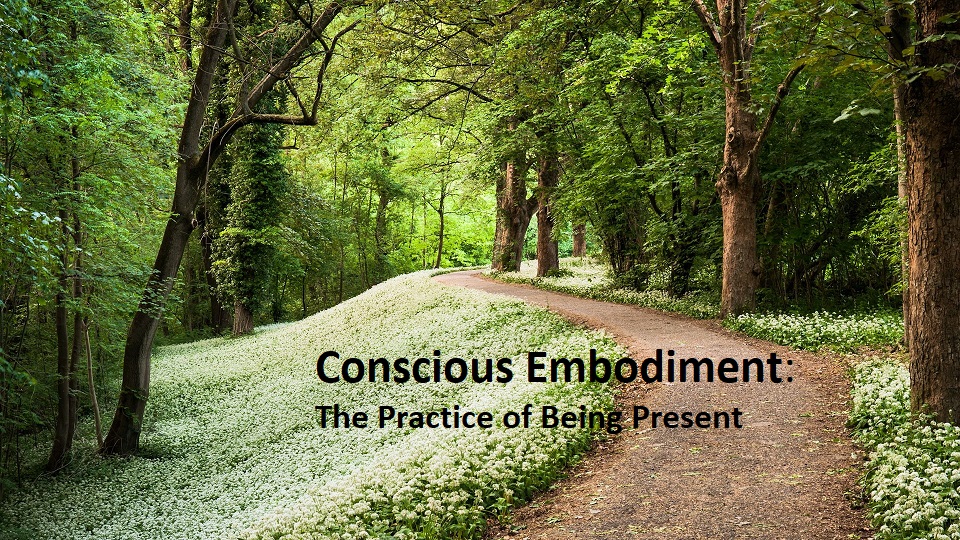
Transformational Change

I have written in previous blogs about "Holding On" and "Letting Go" - of old stories we tell ourselves - and of various forms of change, and creating new patterns of thinking, feeling and behaviour.
To engage in transformational change, meaning changing long-standing – even lifelong – patterns of thinking, patterns of behaviour, and even beliefs that stand in the way of your well-being and happiness, is a long-term project that requires significant commitment. Sometimes, when we read self-help books or inspirational books, we can get the impression, the feeling that "if only I really got it… If only I just did what they're telling me to do, in the right way, then this particular problem, this particular pattern, would change." This is also exacerbated by living in a culture where we have gotten used to "wanting what we want" - and expecting results to be instant and effortless.
I remember, many years ago, going to what we then called "Intensives" – intensive, weeklong, transformational experiences that were a blend of psychotherapy and spiritual work. At those Intensives it wasn't uncommon to experience huge breakthroughs. It might have been breaking through a psychological barrier and, for example, connecting with a feeling of confidence I had never had. Or at another time, connecting with a sense of Self, a sense of my being, my consciousness that was bigger than my "person". Each time the experience was, well, transformational. I had connected with a possibility, a feeling, a sense of myself, that I had never had.
But upon leaving the intensive and returning home, returning to daily life with all its demands, pressures, limitations and stressors, I felt that awareness, that connection slipping away. Whereas I had hoped I could just fully integrate that new awareness into myself and live it in my daily life, I discovered that this was incredibly challenging. I found myself more and more reverting to my old, habitual patterns of thinking, feeling and behaving.
This happens for a number of reasons. One of those reasons is that the new experience of Self took place in environment that was detached from everyday life. This provides an important context to facilitate the possibility for new experiences, but at the same time, it does not provide the context, or what we sometimes refer to as the "scaffolding" that will enable us to build layers of inner support for sustaining new awareness, new consciousness, and new behaviours in daily life. Another reason is that our daily lives are so filled with old habits and routines, as well as people, places and activities that are tied into those routines, and all of these are constant cues that activate our habitual patterns of thinking and behaviour.
But there is also another reason. Our habitual patterns of thinking and behaviour, the ones that we want to change because they don't work for us, but have so much difficulty changing, are largely rooted in fear. If they weren't rooted in fear, we would have little difficulty changing them. So we can experience insight, awareness, connection to new possibilities or a different sense of ourselves, either in the safety of a workshop, or even just in the safety of our home, reading an inspirational book. But our habits of thought, our beliefs based in fear, will attempt to keep us locked into our patterns. For good reasons – these patterns are (mis)conceived as protections against some form of threat. Therefore, our "default mode" is to continue to protect ourselves against that perceived threat.
So, whether it is about connecting with yourself as "a spiritual being having a human experience," a being with unlimited potential and the ability to shape your reality, or whether it is simply about trying to let go of an old pattern of thinking about yourself and your relationship to family members, it takes perseverance and commitment to slowly but gradually change your actual experience.
You may initially buy into a new way of thinking, a new belief or, even, just an intention to let something go. And you may also buy into the idea - the fantasy - that just by adopting this intention or this belief, things should change...and then become very discouraged when little does change.
The key is understanding two things: the first, is that this kind of change, like changing any habit, takes time, perseverance, repetition and commitment. The other, is that the change has to go from your thought and your intention into your body. The body is where the limiting fears are held. The body is where the emotions that first and foremost govern your thinking, and your actions, are experienced. So it is a gradual process of working through the fears and changing the feelings in the body, that allows a new awareness, a new intention, a new way of thinking and behaving, to take root.
Let me take the example of changing one's perception of oneself in relation to family members. You may want, for example, to let go of wishing that siblings would see you in a particular way, or wishing that they would change the way they perceive you. You may convince yourself that "I don't care" and yet your reactions and behaviours will belie that.
If you are still reacting with anger or hurt, then you are still holding on to that wish. If you avoid family members in order not to feel anger or hurt, it is the same thing: you have not let go. It is only when you can think of these relationships, and even be in the company of these people, and feel relaxed and comfortable with yourself, and not reactive to these old patterns of thinking and feeling, that you have actually let go.
(Granted, even when you have let go, you may still choose not to be in the company of those people.)
So it is a healthier and more realistic approach to think of this kind of change as gradual, over time, with repetition, consistent effort and commitment. At the same time, it is useful to engage in some active work, some active interventions to change those feelings. When you have difficulty doing that on your own, this is the role of psychotherapy. A good and effective psychotherapy process will help you to be able to "work through," process and resolve these old feelings.
In my personal and professional experience, "Energy Psychology" methods are probably the most efficient and effective methods for doing this. Energy Psychology methods include EFT ("tapping") as well as the method that I mostly use, Logosynthesis.
Tapping is a technique which for which there is increasing, and increasingly solid, research evidence, despite the fact that it is not yet recognized or accepted in mainstream psychology. It involves tapping on acupuncture points, which has a calming effect on the body and on various emotions. In effect, what you are doing with tapping is changing the feelings associated with certain thoughts or memories.
Logosynthesis achieves the same effect, but with a method that involves internal focusing and repeating specific sentences, specific statements, that are essentially affirmations about letting go of energy and retrieving energy. It can be hard to believe for some people that this method works (and to date, there is virtually no research on it) but I can assure you from hundreds of hours of working with it, that it works very effectively.
Finally, the other important aspect of creating this kind of change, that also takes time, is a process of cultivating those qualities within yourself. One part of this is reflected in the phrase, "Fake it 'till you make it." But it is also about connecting with the feeling that is your goal, desire and intention, and trying to act from that feeling.
So, in my example of family relationships, you might work at replacing feelings of hurt and anger with feelings of acceptance. In most types of personal change it is useful, even essential, to connect with feelings of self-compassion in order to counteract habitual, negative patterns of thinking and feeling.
Doing these things means investing time. It certainly means investing time in practices such as meditation, and mindfulness. In fact, practicing mindfulness is especially useful as it provides a daily experience, and a daily reminder, of how change happens. When you practice mindfulness meditation, you sit with the intention of focusing on your breathing (or, on another point of focus) and noticing whatever occurs in your thoughts feelings or sensations, but not getting caught up in the "current" of those thoughts and feelings. One analogy is that if your thoughts and feelings are like the fast-moving current of a river that has the power to sweep you away, practising mindfulness is really like trying to sit on the bank of the river and watch it, but not be in it.
Nevertheless, when practicing mindfulness, you constantly find that you do get swept away by thoughts and feelings. Despite your intention, and despite your practice, a thought or even an external distraction suddenly resonates with something that has emotional energy for you. The next thing you know, you've gotten "hooked" into rapidly moving thoughts or feelings that take you far away from the present moment, and your breathing. Your job, is that once you notice this has happened, is to make the choice to let go of that current of thought and to refocus on your breathing.
Working on transformational change is a lot like that. Habitual thoughts and feelings are constantly kicking in. Half the time you don't really notice it's happening. It might even be days before you look back and realize, "Oh, that's what I did!" Just as with meditation, it really doesn't matter when you become aware that you have gotten off-focus, or off-track; all that matters is that as soon as you do become aware, your job is simply to make the choice to disengage from that pattern and to reengage in your intended focus.
Just as with meditation, with practice, repetition, consistency and commitment, you find that this gets easier and easier. You find that the time lapse between losing focus and becoming aware of having lost focus shortens. You find that the intensity of the thoughts and feelings, their ability to "hook" you, lessens. The old pattern is diminishing in strength, and the new pattern is increasing in strength.
We can also use the analogy of social change. Trying to change long-standing, well ingrained social attitudes, behaviours, and beliefs takes time. It takes repetition and persistence on the part of those trying to get the message heard and to bring about the change. It requires not giving up, regardless of how resistant people and society seem to be to letting go of old ideas and attitudes, and embracing the new ones. It requires focusing on every place, every individual, where the new ideas seem to get some traction, or some level of acceptance, and cultivating, developing and strengthening those people's adherence to, and belief in, these new ideas until they become the "new normal" for those particular places and individuals. It requires doing this until reaching a "tipping point" where what was a "new normal" for only a few, isolated individuals and groups, becomes "the norm" – or, at least, an inescapable fact.
So transformational change takes time, patience, perseverance and persistence. It means investing time in "tuning in" to what is going on within you. It means investing time in accessing the type of feeling you really want to experience and sitting with that feeling, letting it grow within you. It means investing time in connecting with patterns of thinking that are problematic and working with them. Not "on the fly". Not while doing other things, or squeezed in between other things.
It is like any kind of project, whether that is creating a work of art, or building a deck: you have to invest focused time and energy, using the appropriate tools, to get the results you want.
